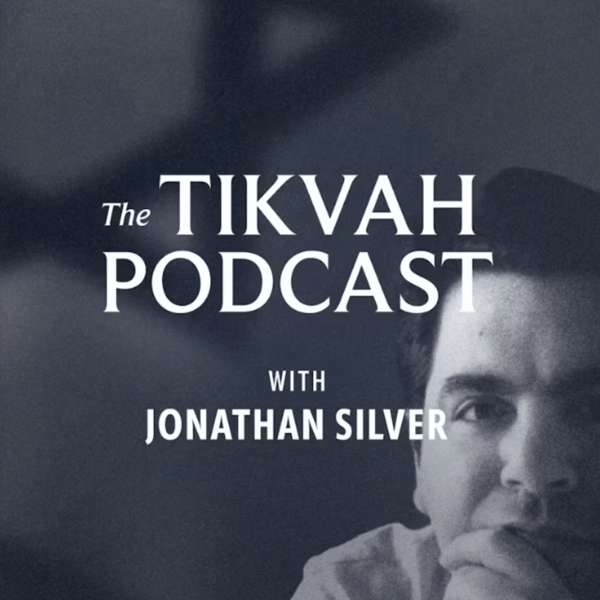Russ Roberts on the Disappointment and the Promise of Prayer
The Tikvah Podcast
Tikvah
4.6 • 620 Ratings
🗓️ 1 February 2023
⏱️ 39 minutes
🧾️ Download transcript
Summary
“Prayer is the language of the soul in conversation with God. It is the most intimate gesture of the religious life, and the most transformative.” Those lines are from an essay called “Understanding Jewish Prayer” by Jonathan Sacks, the late chief rabbi of the United Kingdom. “As the sea smooths the stone,” he writes, “as the repeated hammer-blows of the sculptor shape the marble, so prayer—cyclical, tracking the rhythms of time itself—gradually wears away the jagged edges of our character, turning it into a work of devotional art.” To pray, he says, is to be “brushed by the wings of eternity.”
Descriptions such as these are inspiring, and, based on them, one might expect prayer to be a powerful emotional experience. Sometimes it can be. But often it isn’t. The structures of prayer in the traditional Jewish liturgy sometimes impede the very sentiments that prayer promises to kindle. That tension is the subject of this week’s podcast conversation between Mosaic editor Jonathan Silver and the president of Shalem College Russ Roberts. Roberts recently published a short essay titled “The Agnostic’s Guide to Jewish Prayer” in which he confesses that “The words by themselves don’t work for me.” Still, he’s prayed three times a day for more than 30 years. Why? “I prayed to have prayed.”
Musical selections in this podcast are drawn from the Quintet for Clarinet and Strings, op. 31a, composed by Paul Ben-Haim and performed by the ARC Ensemble.
Transcript
Click on a timestamp to play from that location
| 0:00.0 | Prayer is the language of the soul in conversation with God. |
| 0:11.8 | It is the most intimate gesture of the religious life and the most transformative. |
| 0:17.9 | Those lines are from the late chief rabbi of the United Kingdom, Jonathan Sacks, |
| 0:22.7 | and he wrote them in an essay called Understanding Jewish Prayer that introduces his |
| 0:28.4 | wonderful Sidor, the Koran Sidor. In that essay, prayer is presented in the most beautiful, |
| 0:35.3 | and inspiring and poetic of terms. To pray is to be brushed by the wings |
| 0:40.9 | of eternity. As the sea smooths the stone, Sacks writes, as the repeated hammer blows of the |
| 0:47.6 | sculptor shape the marble, so prayer, cyclical, tracking the rhythms of time itself, gradually wears away the jagged edges |
| 0:56.4 | of our character, turning it into a work of devotional art. Now that sounds amazing, and if I were |
| 1:03.0 | to ask you, if you'd like to be brushed by the wings of eternity, you'd probably expect |
| 1:07.9 | the experience to be transporting and consuming, an experience that would |
| 1:12.9 | affect us in the deepest recesses of the soul and in the innermost chambers of the heart. |
| 1:18.5 | But now, when I turn the pages in Rabbi Sacks Siddur from that beautiful and poetic introduction, |
| 1:24.9 | and I train my eyes on the text of the prayer itself, I am confronted |
| 1:29.3 | with a contradiction, because the feelings that prayer promises to stimulate in the innermost |
| 1:35.3 | chambers of the heart don't exactly pour forth when I read the text of the traditional liturgy, |
| 1:41.7 | and I start to pray. Today, we focus on that contradiction |
| 1:45.7 | and think about Jewish prayer. Welcome to the Tikva podcast. I'm your host, Jonathan Silver. |
| 1:52.5 | My guest is the John and Gene Denal's Research Fellow at the Hoover Institution, the host and |
| 1:57.4 | the founder of the classic long-running podcast, Econ Talk, and since 2021, |
| 2:03.1 | Russ Roberts has been the president of Shalem College in Jerusalem. |
| 2:07.5 | Russ published a short essay entitled The Agnostics Guide to Jewish Prayer at Medium on |
... |
Please login to see the full transcript.
Disclaimer: The podcast and artwork embedded on this page are from Tikvah, and are the property of its owner and not affiliated with or endorsed by Tapesearch.
Generated transcripts are the property of Tikvah and are distributed freely under the Fair Use doctrine. Transcripts generated by Tapesearch are not guaranteed to be accurate.
Copyright © Tapesearch 2025.

